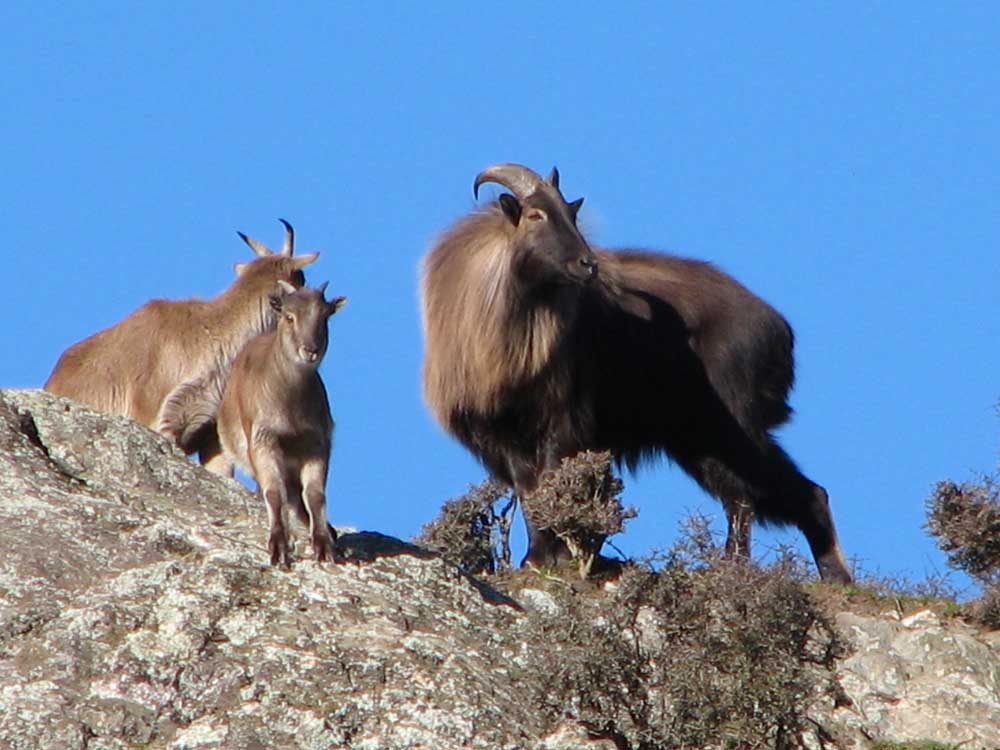Five weeks to chamois (hunting) shape
Published 12:00 am Wednesday, March 2, 2016

- Gary Lewis / For The BulletinA bull tahr, a nanny and a kid perch on a cliff near Makarora in New Zealand.
Every year I apply for a bighorn sheep tag and a Rocky Mountain goat tag in Oregon, and every year the lottery ends without my name being selected. Clearly, after 25 years of trying, the odds are not in my favor.
A few friends have drawn the tags over the years, and after they do their happy dance, they realize they only have a couple of months to get in sheep shape. For some, the task is too daunting. I’ve known more than a few who have given up before they started. They let the tag go without even trying. Because sheep country is hard on folks.
All of this began to seep into my consciousness when I picked up a 26 Nosler and contemplated where I would take it. To New Zealand. In five weeks. To hunt tahr and chamois.
Tahr were brought to New Zealand from the Himalayas. Chamois came to the Land Down Under from the Austrian Alps. On my first trip to the South Island we photographed tahr high up in the cliffs, but it wasn’t until we were deep into the mountains that I saw a herd of chamois. They were at the highest point in a run of mountains.
As our helicopter broke over the ridge, we saw them out in the open on a windswept patch of heather. At the sound of the rotors, they headed for cover into a field of boulders and snow drifts. I snapped a picture through the glass at my feet as chamois broke away. Then we were beyond them. It was a sightseeing trip, not a hunt, and I didn’t see another chamois. But I knew I’d come back.
For the upcoming trip, I’ll use the 26 Nosler. Pushing a 140-grain AccuBond, the muzzle velocity reaches 3,300 feet per second, and it’s a blistering 3,100 fps at 100 yards.
Two years ago, when this new caliber was announced, it sounded like a great choice for an alpine sheep hunt. As I began to tighten the mounts and put the rings on the scope, it occurred to me I was only five weeks away from what could be one of the most difficult hunts of my life.
Chamois are dark brown in color; both males and females have short, straight horns that hook backward near the tip. White on both sides of the head, there is a black stripe below the eyes. Fully grown, a male can reach a maximum of 130 pounds.
Adapted to the climate of the Himalayans, tahr have thick reddish wool coats with a rich undercoat and short, curved-back horns. Older males may weigh up to about 150 pounds.
Because there are no predators in the islands, the animals quickly breed to unsustainable numbers when populations are not held in check by hunting.
After the scope was attached to the rifle, I took out a notebook and taped in a picture of a chamois on the edge of a snow field. Under the picture, I scrawled “Five Weeks to Chamois Shape” and headed to the gym.
Instead of my usual 20-minute free-weight routine, I climbed on an Octane Fitness Lateral X machine. My wife punched the Quick Start button, punched it up to level 12 and set the lateral width to 10. Then she concealed a smile. After that it was squats, a lateral tube toss, calf raises and more unpleasantness. I finished with a few minutes on a stair stepper. With each exercise dutifully recorded in the notebook, I can make sure to mark progress over the next five weeks.
At the range today, I was set to put the 26 Nosler through its paces, but the scope would not let me dial windage. The scope will go back to the factory, because it is clearly not in chamois shape. That’s OK. Neither am I.
— Gary Lewis is the host of “Frontier Unlimited TV” and author of “John Nosler — Going Ballistic,” “Fishing Mount Hood Country,” “Hunting Oregon” and other titles. Contact Lewis at www.GaryLewisOutdoors.com.






